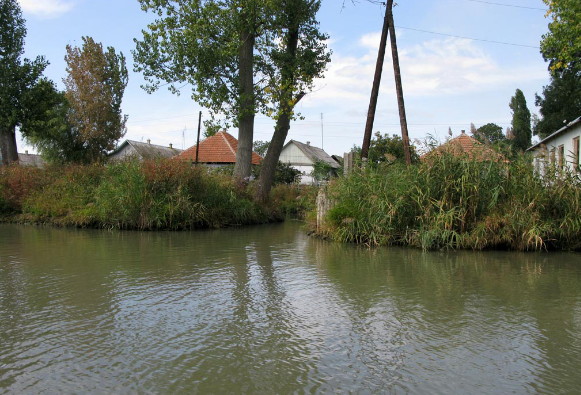Danube River
Danube River (Ukrainian: Dunai). (Map: Danube Delta.) The second-largest European river in length (2,850 km) and basin size (817,000 km). Its lower section, from the mouth of the Prut River to the Black Sea, forms the 160 km border between Ukraine (southern Bessarabia) and Romania (Dobrudja). The Danube Basin within Ukraine covers 28,800 sq km and includes the following Carpathian Mountains tributaries: the Tysa River (with a basin in Ukraine of 12,900 sq km, covering Transcarpathia), the Prut River (12,500 sq km), and the Seret (Siret) River. Within the boundaries of Ukraine the Danube flows through the Black Sea Lowland, forming a delta approximately 55 km below the mouth of the Prut and separating into three estuaries: the northern Kiliia (which follows the Ukrainian border for almost 100 km), the middle Sulina, and the southern George. Approximately two-thirds of the Danube total runoff passes through the Kiliia Estuary (500–1,200 m in width and 10–20 m in depth) and separates into a series of branches before entering the sea. The entire Danube delta consists of floodplains interlaced by hundreds of creeks and channels and covered with reeds and brushwood. On Ukrainian territory the Danube is replete with fish, primarily sturgeon, and hence provides the population with one of its principal occupations—fishing. All sections of the Danube within Ukraine are accessible to small seacraft. The major Ukrainian ports on the Danube are Reni, Izmail, Kiliia, and Vylkove. The great economic importance of the Danube lies in the fact that it links Ukraine directly with other Danube countries. The Danube became an international river open to all nations in 1856. From 1949 to 1991 the Ukrainian SSR was represented by the Union of Soviet Socialist Republics in the Danube Commission, an international organization with headquarters in Budapest that regulates navigation along the Danube.
The Danube has played a role in Ukrainian folklore and history. It appears in many Ukrainian folk songs as a symbol for a river or for water in general: this is perhaps a remnant from the age of the great migrations of the Slavs in the 5th–7th century, or from the later period of Ukrainian settlement on the Danube. The Danube is glorified in historical songs and epics, starting with Slovo o polku Ihorevi. The Tivertsians reached the lower stretches of the Danube during the 9th and 10th centuries. In 968–71 and in 1116 the Kyivan princes Sviatoslav I Ihorovych and Volodymyr Monomakh attempted to establish a stronghold along the lower Danube, but this was successfully accomplished only by the Galician prince Yaroslav Osmomysl (1153–87). Either he himself or his kinsman Ivan Rostyslavych Berladnyk founded Malyi Halych (present-day Galaţi) on the northern bank of the Danube. In the 12th century, the Danube frontier was settled by the Berladnyky. The Principality of Galicia-Volhynia lost the Danube regions to the Golden Horde in the 1240s. During the 16th and 17th centuries the Ukrainian Cossacks often attacked the Turkish garrisons in Kiliia. After the destruction of the Zaporozhian Sich in 1775, the Cossacks founded the Danubian Sich on the Danube delta, then under Turkish rule. Their descendents inhabit the area to this day. In the 19th century, under Russian rule many Ukrainian peasants were settled on the northern bank of the Danube River.
[This article originally appeared in the Encyclopedia of Ukraine, vol. 1 (1984).]

